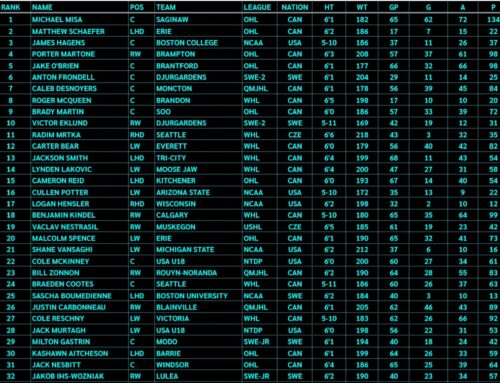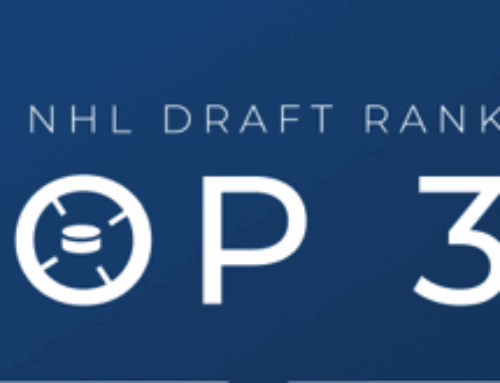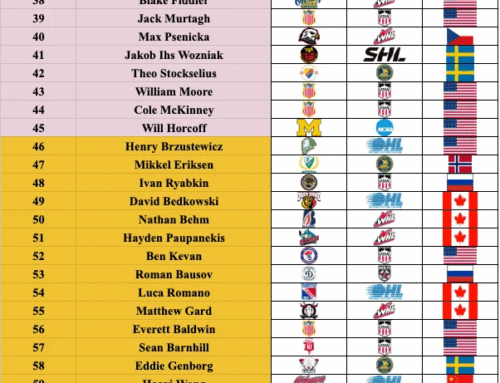Advanced Fantasy Hockey Stats: The Importance of Possession
Hayden Soboleski
2017-12-03

Last month, we examined the very earliest history of statistics in professional hockey. From goals to goals against average to penalty minutes to the radical idea of the assist, hockey statistics tracking quickly evolved to encompass not only those who can score, but those who help others score, and those who can stop a puck. As a tool for the fans and management alike, statistics became a crucial part of the sport defining the way we view a player’s career.
From the ashes of the National Hockey Association, the National Hockey League was convened in 1917 over an ownership dispute out of Toronto, a place well known for strong and stable leadership. The NHL agreed to essentially bring over the same rules and measures as were used in NHA and as such, goals, assists, penalty minutes, and goals against average were the main measures available. In true NHL fashion, evolution and progression in measurement stayed remarkably stagnant through many decades. Goals and points scored while on the power play or shorthanded were added in the 1933-34 season, and over a quarter of a century later, parts of the NHL began to take the next step in statistical measures.
The Montreal Canadiens began tracking goals scored for and against while a given player was on the ice in all situations except for goals scored while on the powerplay. The common term for this became known as plus-minus.While today many are aware of this measure’s shortcomings in 2017, for decades it was used as a significant barometer of the overall quality of a player, and gave a better option to evaluate players who tend to score points less such as defensemen. As the Montreal Canadiens experimented with these new measures and ideas, they managed to win seven of nine Cup Final appearances under the leadership of managers Frank Selke and Sam Pollock and coaches Dick Irvin and Toe Blake. The Canadians had found a new way to evaluate a player’s impact on the game as a whole. The mantra was simple: Scoring is necessary, but at the end of the day all you need is to simply score more as a team than your opponents. The more players you have that are able to doing so, the better your team will be.
Through the 1960’s, teams clamoured for a way to keep up with the mighty Canadiens, and as more and more teams began incorporating plus-minus and shots on goal, the league appeared to even out somewhat as Montreal managed to secure (just) five championships in the decade. As expansion approached, teams also began to track a different, but far more impactful metric: shots on goal. Similar to assists, it is conceivable that many would attempt to discredit measuring shots on goal, seeing as how if they led to goals, they would be registered as goals. Perhaps players could simply shoot from anywhere to pad out their metrics to ring out an extra few dollars during contract negotiations? At the end of the day, our story always circles back to the magic word: Advantage. Earning more shots on goal than your opponent (summarized as Shots For Percentage (SF%)) tended to result in greater goal differentials. Until recently, it has been one of the more reliable measures to judge the future success of a team.
A common thread in all metrics in sport is that they are designed to push probability. If you have a batter in baseball with a .220 batting average, and another with a .300, which one would you rather have on your team? The player with the .220 might hit that one home run every so often that gets all the headlines and wins you the game, but that .300 batter likely gets on base significantly more than the other batter, thereby giving you a better chance of scoring a run in a given inning. Is that player always going to be the superior option? Of course not, but much that we’ve achieved as a society comes down to likelihood of success. The same is true for shots on goal, goals, assists and everything else we’ve covered so far. Nothing in sports is guaranteed, but if you can modify the variables a bit, ending up on top an extra 5% of the time might mean the difference between just missing the playoffs, and having a chance to win it all.






